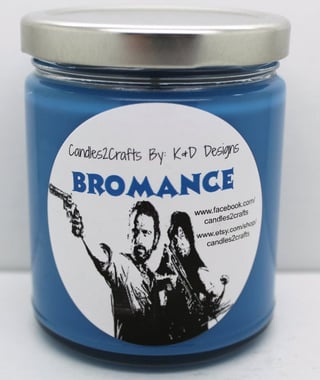Links are valuable because they connect people to information. No matter what other value we derive from links–be it authority, relationships, traffic, or conversions–they are foremost important because they’re useful to real people.
Links are valuable because they connect people to information. No matter what other value we derive from links–be it authority, relationships, traffic, or conversions–they are foremost important because they’re useful to real people.
As part of an integrated marketing strategy, link building is most effective when there is a clear understanding of the humans behind links. From a marketing and brand representation standpoint, it’s better to have no link at all than to acquire a link that is irrelevant or useless to the intended audience.
As an SEO working with a new client, finding the right people can be a challenge.

Sure, some audiences are easy to identify. For example, you can broadly assume that sports memorabilia has an audience of sports fans or people seeking gifts for sports fans. Easy peasy.
But what about obscure industries? Where are the audiences for the less common, less popular, straight-up odd companies and products?
Running example: Weird Novelty Candle Company
For this post, I’m going to demonstrate how to determine a good target audience to secure links, specifically for a client in an obscure industry. For fun, I’ll use a weird novelty candle company as the example. Because they are out there.

Someone has to sell these beauties. Source.
Even the most bizarre of industries has an audience. All it takes to find that audience is creativity, elbow grease, and a focus on audience-first relevance.
Audience-First Relevance 101
The key to any successful SEO campaign is understanding what your target audience is searching for online.
Relevance has been increasingly important to SEOs over the last few years. Search engines are getting better at reflecting relevance in their results pages–real relevance as dictated by human brains, which is complex and often indirect.
Now more than ever before, search engines are able to make connections between seemingly-disparate topics based on human thoughts, opinions, and expressions. This allows SEOs to focus on what your target audience is interested in rather than what keywords they use.
This is exceptionally good news for obscure and/or weird clients. Let’s talk about our example weird candle company. Such a niche company has traditionally struggled to connect with a meaningful audience in the SERPs. After all, keywords like [bromance scented candles] don’t exactly get much traffic.

I have so many questions. Source.
However, we all know at least one person whose ears would perk up at the words [bromance scented candles] and pull out their wallets. In order to reach that kind of person without depending on low-traffic keywords, we need to be a little creative about related keywords that actually get searched for.
Instead of focusing our efforts on keywords like [bromance scented candles] (precisely 0 monthly search volume), we can broaden our attention to include terms like [unique candles] (1.3k monthly search volume) and [man candles] (3.6k monthly search volume). But we can also focus on narrow terms that are relevant to our target audience in less direct ways. Increasing emphasis on audience-first relevance allows us SEOs to be more creative in how we go about doing that.
This is why determining our target audience is so important to do early on. Identifying keywords depends on finding what’s relevant to our target audience–and to do that, we’ll need to pinpoint who, exactly, we’d like to reach.
Identifying Personas for Link Building
Because link building is part of an overarching marketing strategy, it can almost always benefit from the same research used in traditional marketing. In order to find audiences in traditional marketing, we create buyer personas.
For link building, buyer personas can reveal a great deal about how to determine relevance. Information about their hopes and pain points can help us understand what information is most useful to them, what content ties that information with our links, and which websites that kind of content appears on.
Real buyer personas are complex. They construct elaborate fictional people that represent distinct segments of your larger audience. Each profile is comprised of fictional details (like education level, goals, responsibilities, etc.) that are based on real data and information from actual customers.
However, we often aren’t afforded access to this level of market research for our SEO clients. (It would be nice, though, and we should always ask for it from clients if they have it.) The most comprehensive personas are developed by studying consumer data, but we rarely have access to that, either. So sometimes we need to create pseudo-personas on our own. The best way to do that is to ask questions, especially questions tailored to your product or service.
Identifying Personas for Our Weird Candle Company:
Let’s walk through a cursory example of what this question-asking process might look like for our novelty candle company.
Here are a couple of starter questions:
- Why would someone buy one of these candles?
- Gift. Candles in general, especially themed or unique candles, are popular to give as gifts.
- Novelty. The “isn’t this cool?” factor.
- Home decor. Maybe the crying animal head candles really fit their aesthetic. (That article I just linked to, by the way? It's been viewed over 174k times. Talk about potential audiences!)
- Light. Ha, no. No one buys these candles for lighting purposes. Though maybe if there was a power outage...
- What nontraditional use do these candles have?
- Gag gifts. Gag gifts for sure.
- Possibly holiday decorations. There are some pretty creepy candles for Halloween.
- Would someone seek out any of these candles in particular?
- Only if they were specifically interested in the unique theme represented in our candle–a narrow audience. The Bromance candle (see above), for example, might appeal to fans of The Walking Dead, who happen to also enjoy candles.
- Maybe if a particular item caught their eye elsewhere (online or off) and they looked it up later. Maybe they saw a picture of a set of sushi-themed candles and need them more than anything in the world.
- Would one person purchase multiple types of candle at once? (How varied would their online shopping cart be?)
- Unlikely. Especially if they were drawn in by a particular product, they’ll probably purchase one item or one type of item at a time.
- Possibly if they’re purchasing multiple candles of a same theme, e.g. various ocean-themed candles.
- In what circumstances would someone buy more than one of these candles at once?
- Party favors! There are plenty of little candles worthy of themed celebrations.
Even though these are hasty, imperfect questions, they can help us begin to understand some of the demographics we could expect to be interested in our candles.
Defining a Clear Target Audience
Even with this small amount of information based on from-the-hip questions, even though nothing we have is based on data, we can still form a mental image of a couple different personas.
So who’ve we got in our target audience so far?
The Gag Gifter: A mischievous teenager or young adult who wants to buy a dog poop candle (see above) as a gag gift for their sibling or friend.
The Legit Gifter: A thoughtful gift giver looking for a meaningful item personalized to their friend or loved one. Unlike someone looking for a gag gift, this person is hoping to delight the recipient of their gift (not amuse or horrify them).
The Collector: This person is at least partially obsessed with a particular topic–a topic one or more of our candles just happens to be relevant to. Whether it’s an obsession with pug dogs or a need to own everything Mario ever made, the Collector would love a themed candle or two for their hoard.
The Home Decorator: A quirky artistic-type who values unusual trinkets like pinecone-shaped candles. This is a person with sophisticated taste who prefers visual interest to utility.
The Party Planner: A party planner who wants unique themed decorations or party favors. They could be searching for rainbow candles to decorate for a child’s birthday or perhaps looking for mini heart-shaped candles to give away at a Valentine’s Day bash. Loves playing host for social gatherings.
Not a bad start, right? We have at least three distinct audiences in that list, with a few subsects.
Now that we have a defined audience who might be interested in our product, the next step is to locate where this audience lives online. The websites they visit are the ones most likely to actually link to our unusual candles, since we provide value to their audience.
That’s exactly what we’ll tackle next in part two: where to find personas in the wild and how to engage them by speaking their language.

